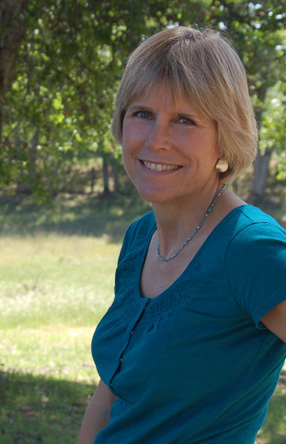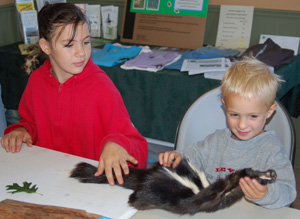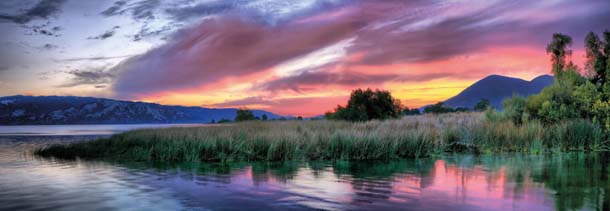Roberta Lyons is a muckraker, though a different sort than her journalist mother. Lyons herself looks past actual muck – the rash-inducing algal blooms that periodically foul the shores of her beloved Clear Lake – to find plentiful natural beauty and wildness. And through her role as president of the Lake County Land Trust, she does her best to preserve those special qualities.

BN: Where did you grow up?
Lyons: I was raised in Lake County, on the shores of Clear Lake, loving the beauty and the wildlife. (My family moved here from Washington State in 1955 and purchased the Clear Lake Observer, a local weekly, soon afterwards.) My mom was an old-fashioned muckraking journalist and she edited the paper. She rejected “objectivity” and espoused having a point of view, including being a strong advocate for the lake. In my 20’s, I left home to travel the world, but then I returned home to Lake County and started working for the newspaper, doing pretty much everything: writing articles, working on graphics and design and in the darkroom, and doing typesetting. But most of all, I loved to write stories.
Early on, I worked on some very important stories, such as the acquisition of Anderson Marsh State Historical Park, and Clear Lake’s disappearing wetlands.
BN: How did you learn journalism?
Lyons: I have a liberal studies degree from Sonoma State University (1992), but my mom trained me, almost by osmosis, in journalism. At home we discussed what good newspaper writing is about: a good lead and as much information as possible in the beginning.
BN: How did you become involved in the Lake County Land Trust?
Lyons: It’s painful when I see bad things happening to the lake. Right now, things are actually pretty good. Like we now have a grading ordinance that requires a permit for development. This has stopped some of the “recreational bulldozing” which can affect water quality. But regulation is not enough to prevent damage from property development because people have a right to use and develop their property. There is still land in Lake County that needs to be preserved, though, so I co-founded the Trust in 1993. That’s how a land trust works: buying property to save it.
We completed our first project in 1999 – Rodman Preserve – to protect a huge heron rookery at the north end of the lake. We did a massive campaign, with an “adopt-a-nest” program. Then we got a grant from the Wildlife Conservation Board. Working with biologists from the state Department of Fish and Wildlife, we presented a successful proposal to the Board and got a grant for $350,000. In the end, we purchased 132 acres; Fish and Wildlife, 102 acres; and the county got a 40-acre park.

BN: What kinds of programs do you have there?
Lyons: During the summer, we have a great kids program at Rodman. On these walks we often see something exciting like a coyote. After the walk, we use microscopes to investigate bugs and leaves.
Shortly after the program, one of the little boys returned with his grandmother to go on one of our public nature walks. He said he remembered the place and wanted to see it again. This was kind of neat for me.
BN: Aside from the grants to purchase properties, how does the Land Trust support itself?
Lyons: We’re funded almost totally by two fundraising events. I really appreciate the local support we get. It’s very rewarding that even with such a small county we’re still able to stay in business.
BN: Describe one of your current projects.
Lyons: Our biggest project is the Big Valley Wetlands Protection Project on the west shore of Clear Lake. We’re working again with Fish and Wildlife to obtain a grant from the Wildlife Conservation Board. We have an option on a 30-acre parcel, and we need to raise $180,000 to complete the purchase.
BN: How do you address the issue of algae in the lake?
Lyons: I don’t deny that it’s a problem but it’s only a problem for around two summer months out of the year. This summer, though, on the south end, the water has been absolutely gorgeous. We go swimming all the time – we went just yesterday!
The algae is a confusing natural system. Sometimes it really smells, so it can be devastating to our regional economy. If someone is not a birder, they are not going to come during the winter, so they won’t know the problem is seasonal.
BN: What is your favorite outdoor destination?
Lyons: There’s nothing better than spending a summer day on Clear Lake. I like swimming and waterskiing (well, not so much anymore). Even in the winter – that’s when most of the birds come. We have bald eagles. Yesterday I spotted one on a grapevine, so close. It’s what people call a sense of place.
I especially like Anderson Marsh State Historic Park. You can walk on the boardwalk and visit a wetlands habitat. Or if you’re a hiker, you can take a really long hike down a trail to the shoreline of the lake. You can do some lovely birding down there: There are hawks, bald eagles, herons, and black-shouldered kites. And if you are lucky, at the right time of year, you can see phainopepla; they’re not rare, but they’re a little unusual to see… pretty birds.
>> Learn more about the Trust, its nature education programs and Saturday walks at Rodman Preserve.
>> For more about Clear Lake – and its water trails – read Bay Nature’s April cover article.





